No products in the cart.

All You Need to Know About Diastasis Recti
Diastasis Recti is a postpartum abdominal condition faced by most women after pregnancy and is rarely talked about by many. During pregnancy, the body does a lot of extraordinary things to accommodate the growing baby and one of them is the expansion of the muscles in the abdomen. Here is the primer on everything you should know about this postpartum condition.
Diastasis recti is the partial or complete separation of the muscle located in the front of the body, beginning at the pubic bone and ending at the sternum. The muscle is also known as the ‘six-packs’, which meet at the midline of the stomach.
Precisely, Diastasis Recti is a gap between the left and right abdominal wall muscles that can result in a rounded bulging tummy. The belly sticks out because the space between the left and right belly muscles has widened.
Statistically, about 60% of women or more may experience diastasis recti during and/or after pregnancy according to PubMed Central. So, if your tummy still looks bulgy or protruding months after you have delivered your baby, chances are …diastasis recti might be the cause.
HOW DIASTASIS RECTI HAPPEN: How does the muscle separate?
The factors that are responsible for this condition to occur are the hormones and the ever-expanding uterus. During the gestational period, the connective tissue called the Linea alba usually thins out in response to a mother’s change in hormone levels in other to accommodate the enlarging uterus.
The changes in the mother’s body are what make way for the baby to grow in the uteri (womb). Once the baby is delivered, the hormone levels return to the usual state and the thinning improves.
But in many cases, the muscles became so stretched out during pregnancy that it loses its elasticity, therefore unable to retract back into its previous form. To explain more about losing elasticity, think of an overstretched rubber band.
The possibility of having this condition for women with more than one child is likely, especially if the children are close to each other in age. Also, one is likely to have this condition if they are over 35 when pregnant.
It is worthy to note that while diastasis recti more commonly occur in pregnant women, pregnancy is not the only cause. Men and children can suffer from a separation as well due to unusual internal abdominal pressure, such as after a surgery or injury.
WHAT ARE THE SYMPTOMS OF DIASTASIS RECTI?
Most symptoms are usually absent during the first half of the pregnancy period, but some women may start to notice the symptoms towards the end of the second trimester. By the postpartum period, all women experiencing diastasis recti should be able to see a visible bulge where the abdominal muscles separated. These symptoms below may indicate diastasis recti…
- Weak abdominal muscles
- Low back pain
- A bulge that runs down the middle of the abdomen
- Difficulty in lifting objects
- Difficulty in performing routine tasks
- Poor posture.
*Please note that not all people will experience all of these symptoms. It is common for people to experience only one or a few of these symptoms. A diagnosis by a trained professional is important.
- There is a natural way to solve those itches? Our article on resolving yeast infections should help.
HOW IS DIASTASIS RECTI TREATED?
The treatment for diastasis recti is usually focused on rehab exercises to repair the separated muscles. It also includes some form of educating information on the kind of exercises that should be avoided in other not to worsen the condition.
The exercises below do not help repair the separated muscles and should be avoided until the healing is complete. Some exercises to avoid are…
- Abdominal twists
- Backward bends that stretch the abdominal area
- Common yoga poses that stretch the abs
- Any heavy lifting activities that bulge out the stomach.
- Exercises that cause your abdominal wall to bulge
There are a couple of good exercises that are helpful for diastasis recti treatment. These are…
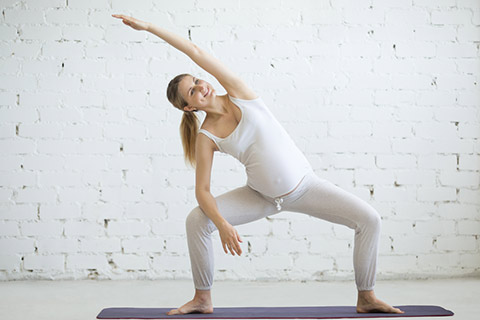
Goddess Side Bend: Stand with your feet wide, turned out to about a 45-degree angle. Make sure that your knees are lined up with your feet. Exhale as if blowing out candles. Begin to bend your knees, tracking your knees in line with your feet, until your knees are over your ankles. Press down through your heels as if you want to come up but don’t. Add a side bend by raising your arm and as you side bend, create a lot of resistance so that you do not flop into the bend.
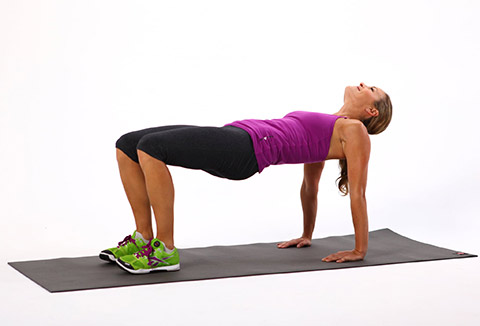 Tabletop/reverse marching: Begin by lying on your back with knees bent and feet flat on the floor. Inhale, then on your next exhale, blow as if you’re blowing out candles. As a result of the exhale, you will feel your deep core engage and move in. While you continue exhaling, slowly bring one knee in toward your body. Keep the knee bent. Your thigh will be perpendicular to the floor at the top of the move, as in tabletop.
Tabletop/reverse marching: Begin by lying on your back with knees bent and feet flat on the floor. Inhale, then on your next exhale, blow as if you’re blowing out candles. As a result of the exhale, you will feel your deep core engage and move in. While you continue exhaling, slowly bring one knee in toward your body. Keep the knee bent. Your thigh will be perpendicular to the floor at the top of the move, as in tabletop.
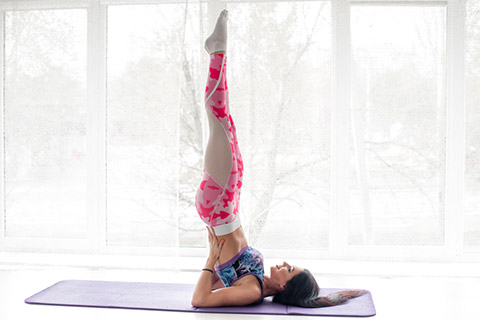
Candles: This can be done seated, standing, lying, or even on hands and knees. Breathe in and on the exhale, blow out as if it’s candles on a cake. Keep blowing slow and steady. Don’t force all the air out in the exhale at the beginning. Feel your abs coming in and engaging as you exhale all of the ways to the end. Each time you inhale, gently release the ab contraction.
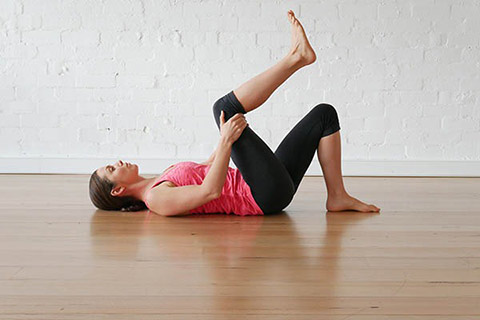
Single-Leg Reach Lying on Back: Beginning in tabletop position and keeping your pelvis still, reach your right leg long on a high diagonal on your exhale. Inhale as you return to neutral. Perform 10 reps on each side.
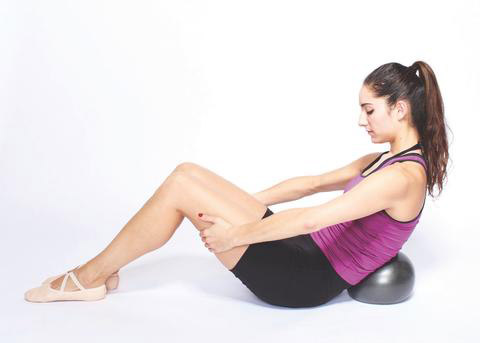
C-Curve: Begin sitting high on your sit bones, feet wide, and hands behind your knees. Gently rock back without sinking your chest in. Staying back, exhale as you pulse backwards, hollowing out your low belly. Go for 20-30 pulses.
Important: To get the most benefit, be sure that you are not bulging, bracing, or bearing down while exercising. These 3 common cheats can worsen a diastasis recti.
HOW TO SELF-CHECK FOR DIASTASIS RECTI
Emily holistic quid gave detailed instructions on how to self-check for diastasis recti.
- Get in a comfortable starting position. Lie on your back with your knees bent, feet flat on the floor.
- Place your fingers on either side of your belly button, palms facing down.
- Lift your head and neck just slightly off the floor while you press down with your fingers. If there is a gap, that is the diastasis.
- Conduct the same test just above your belly button and just below the belly button (as the gap can measure differently in these places.
Note: Please this is not personal medical advice, kindly consult your doctor when needed. Performing these workouts under the supervision of your physiotherapist is ideal, you may consider consulting one before you begin.
The postpartum period can be very exhausting both physically and emotionally especially if there is a little complication after childbirth. Therefore, this is enough reason to take proper care of yourself and get all the necessary help that you need. Although diastasis recti is very common and treatable, it is not to be taken lightly.
Talking with your doctor about your concerns could potentially lead to a proper examination, diagnosis, and probable referral to a physiotherapist who can create a treatment plan that will help you to become stronger and more confident about your postpartum body.







Anne
Quite detailed and useful info. Thanks Damidols